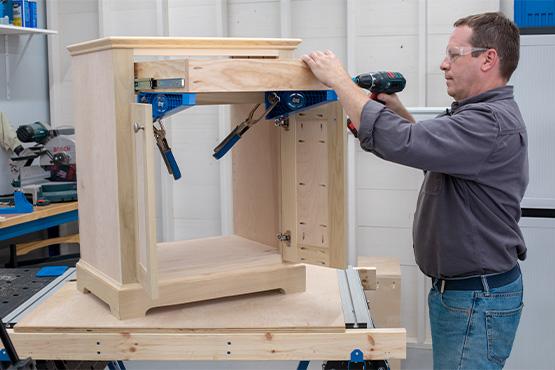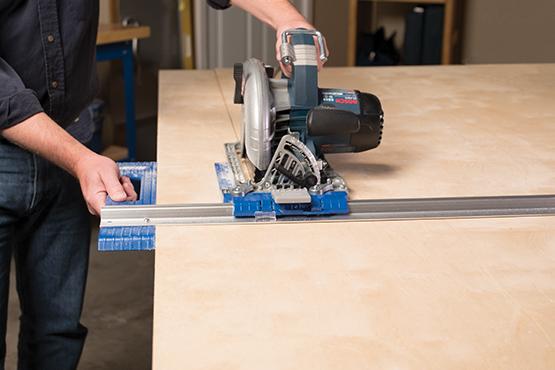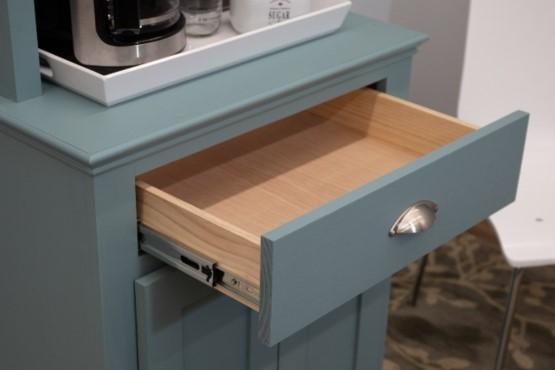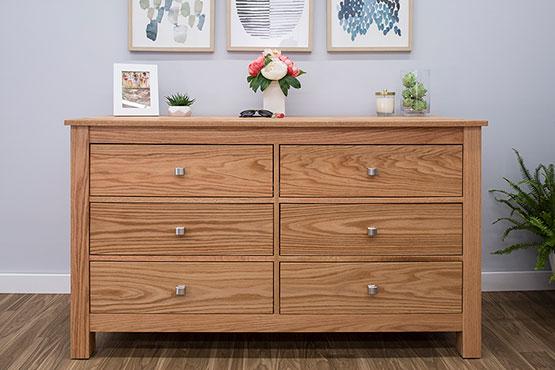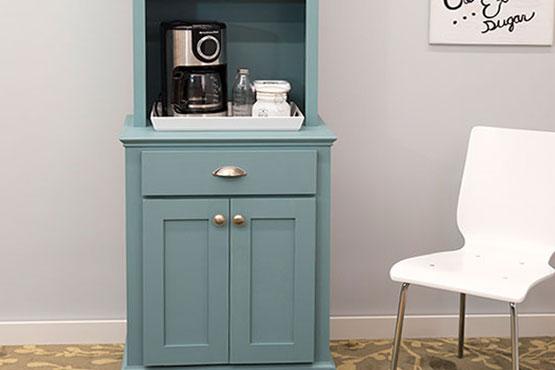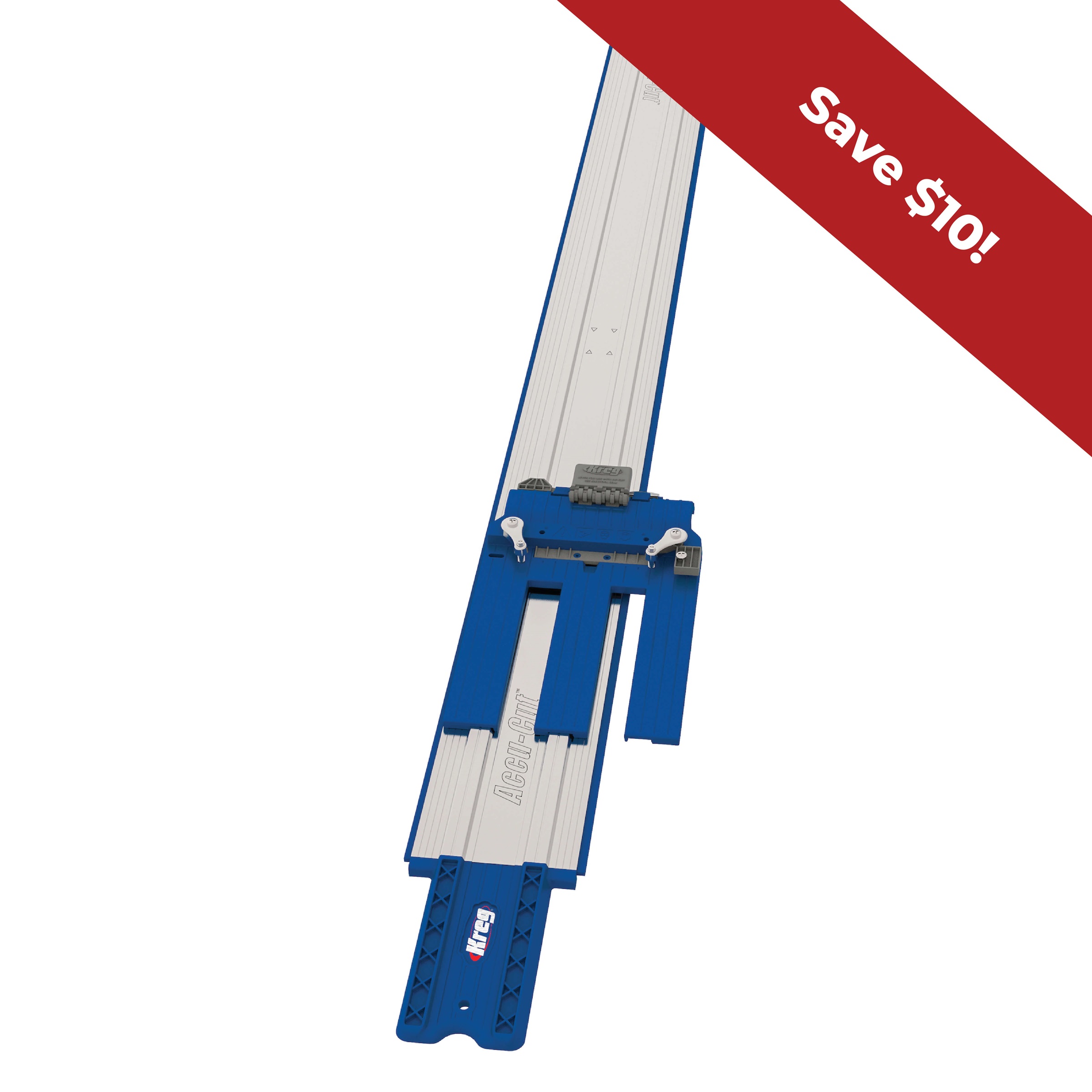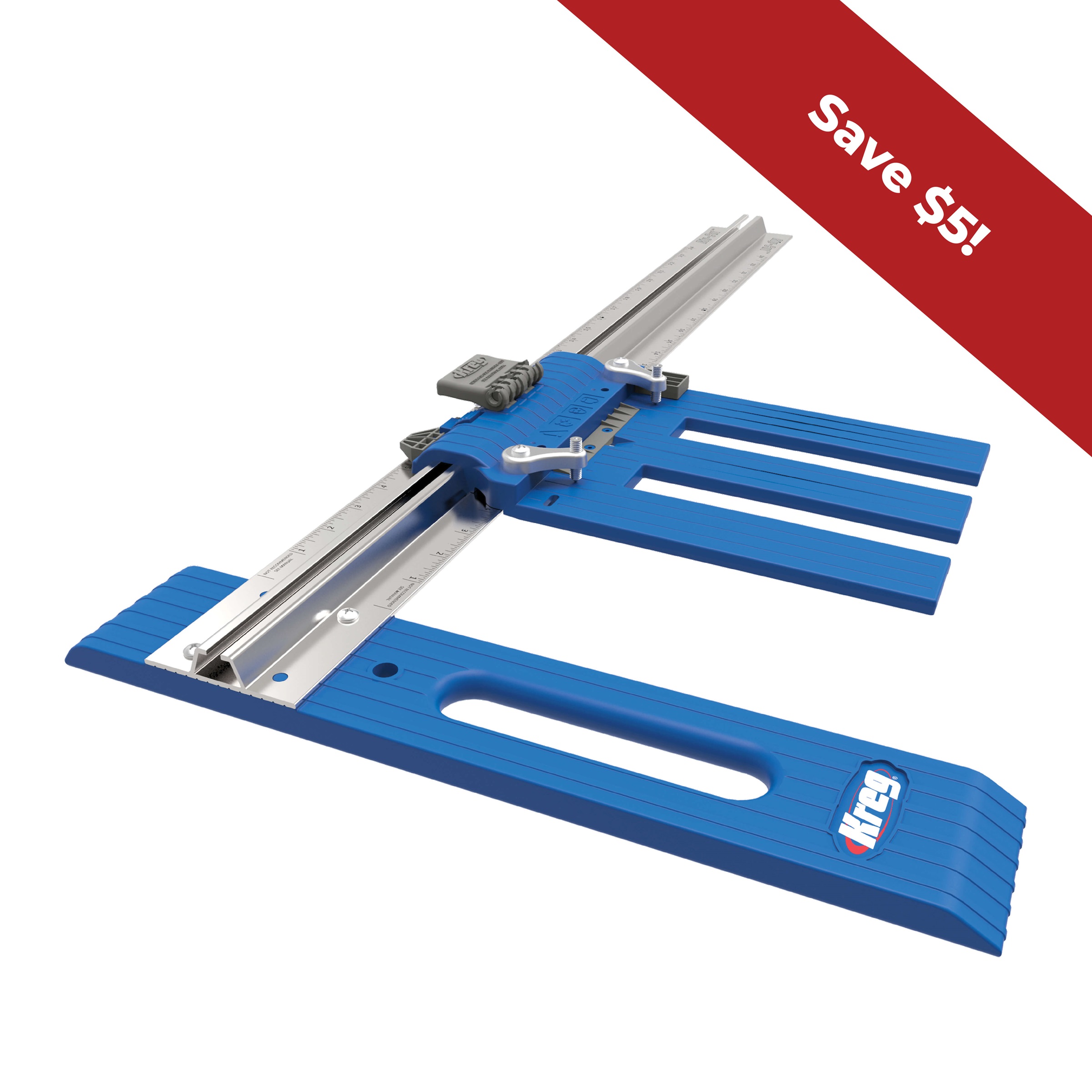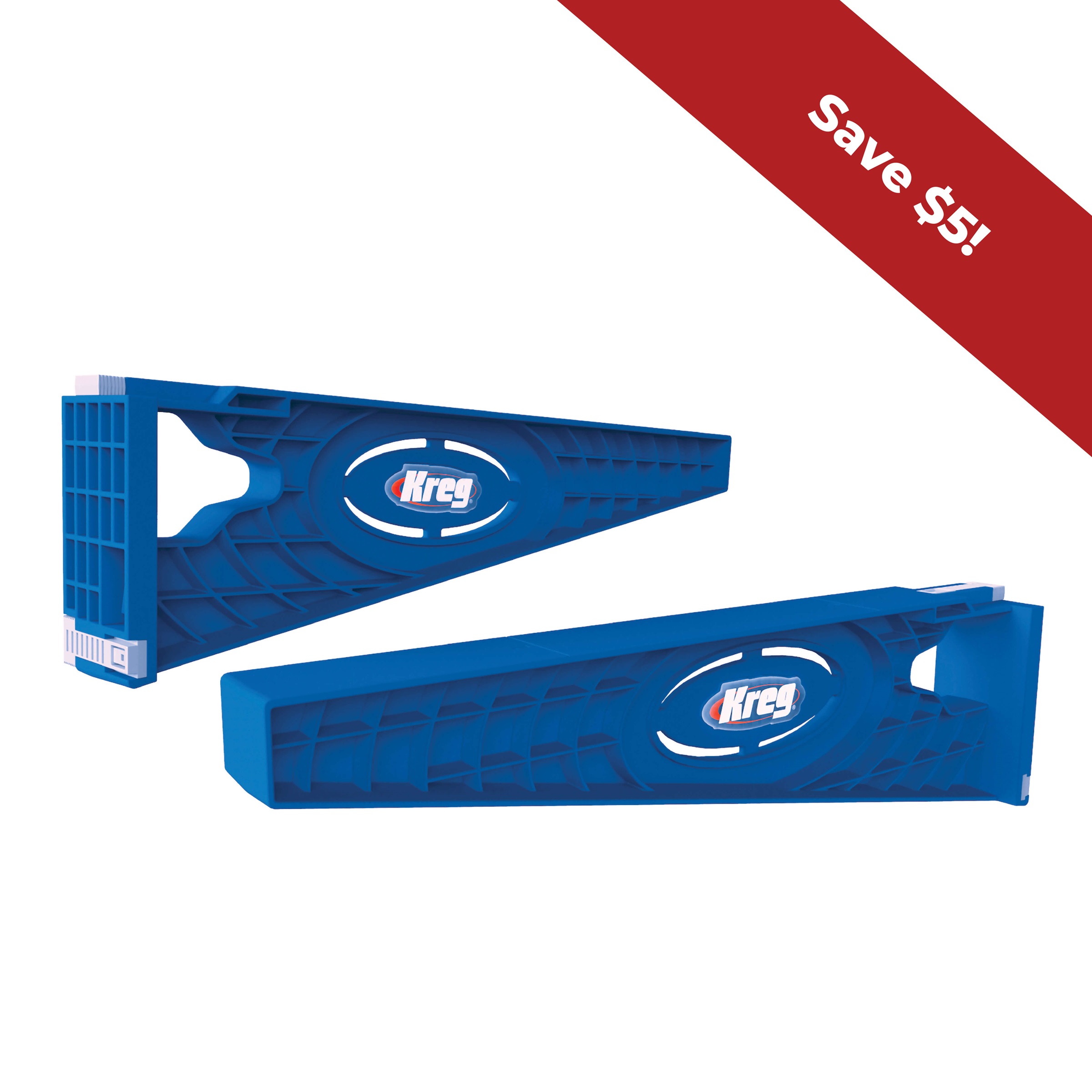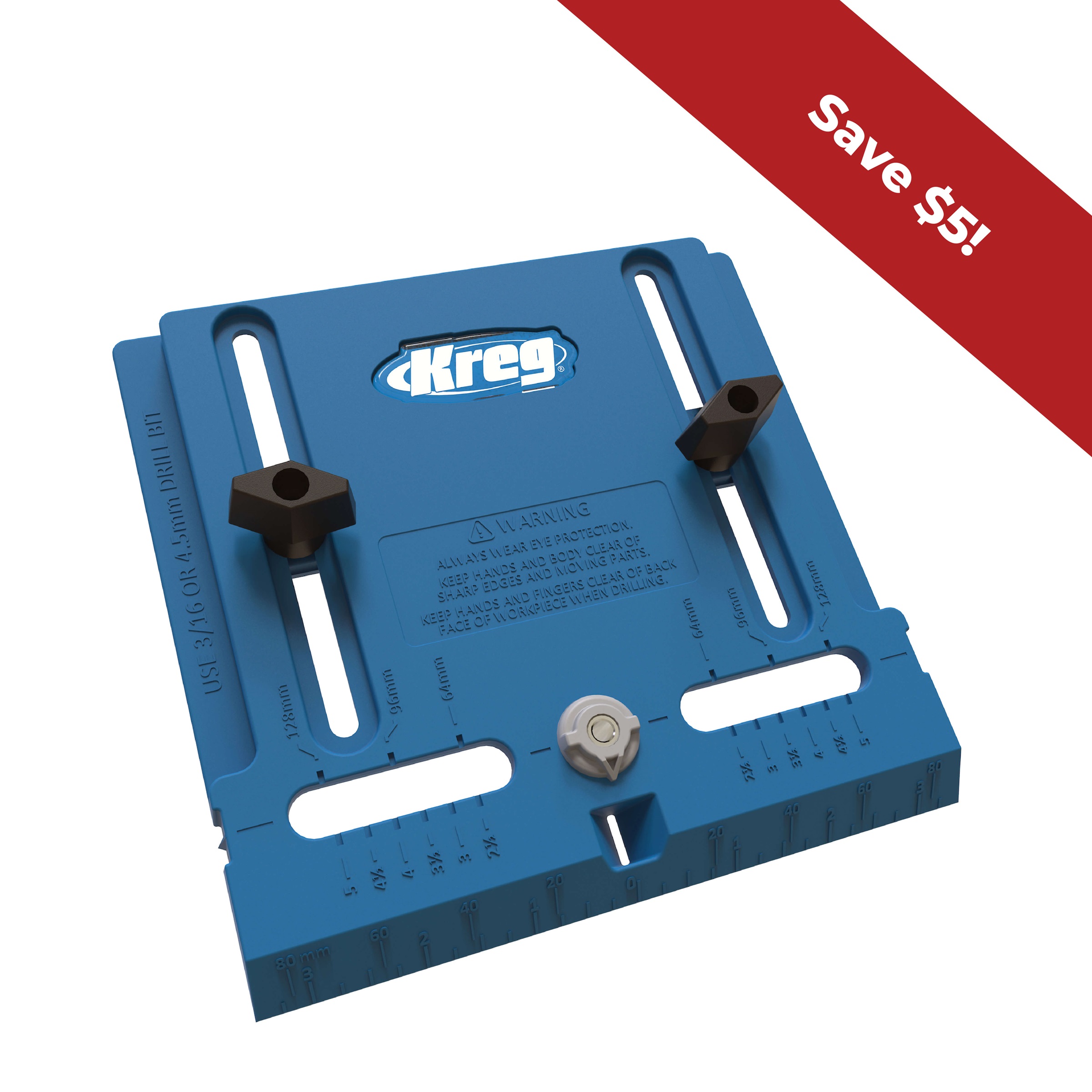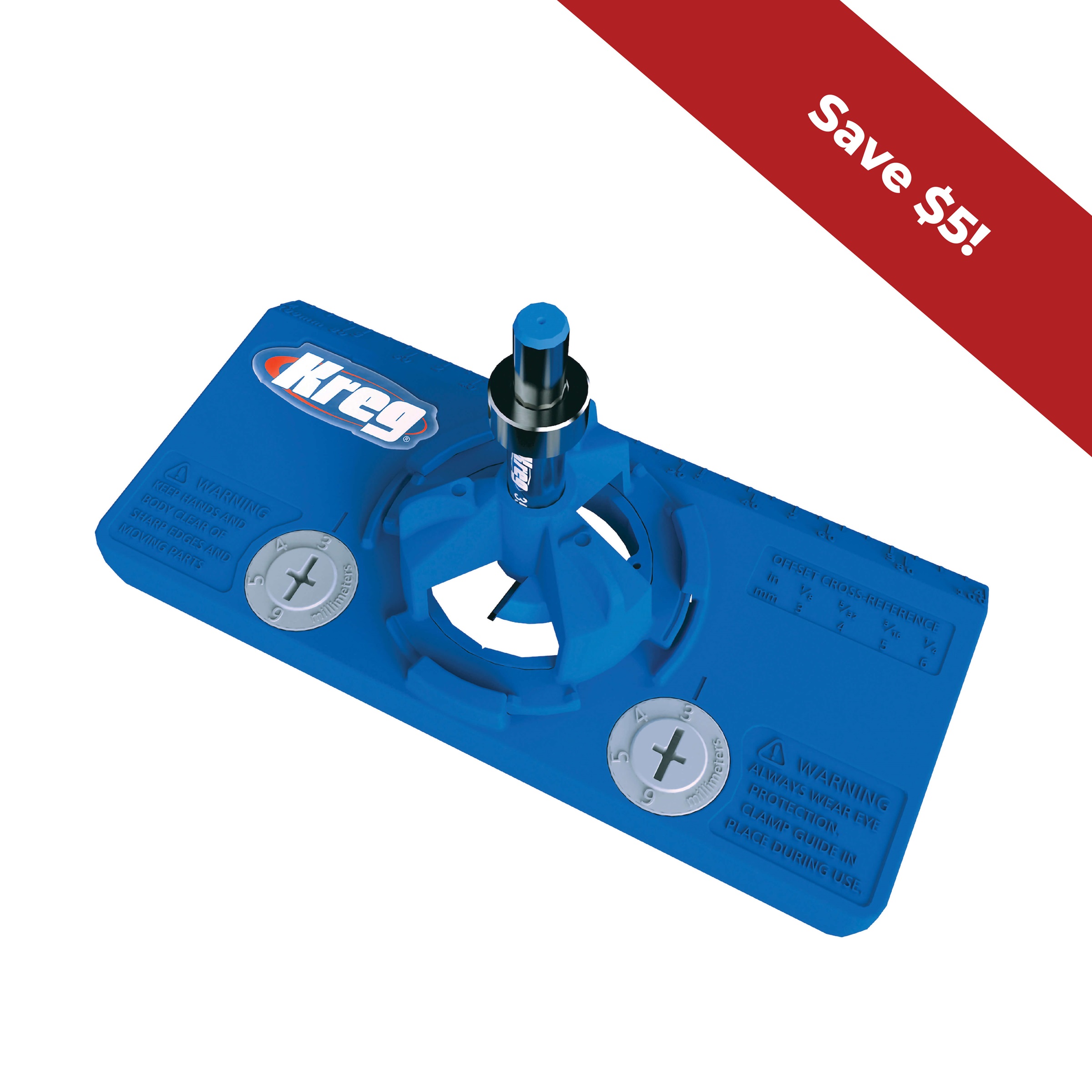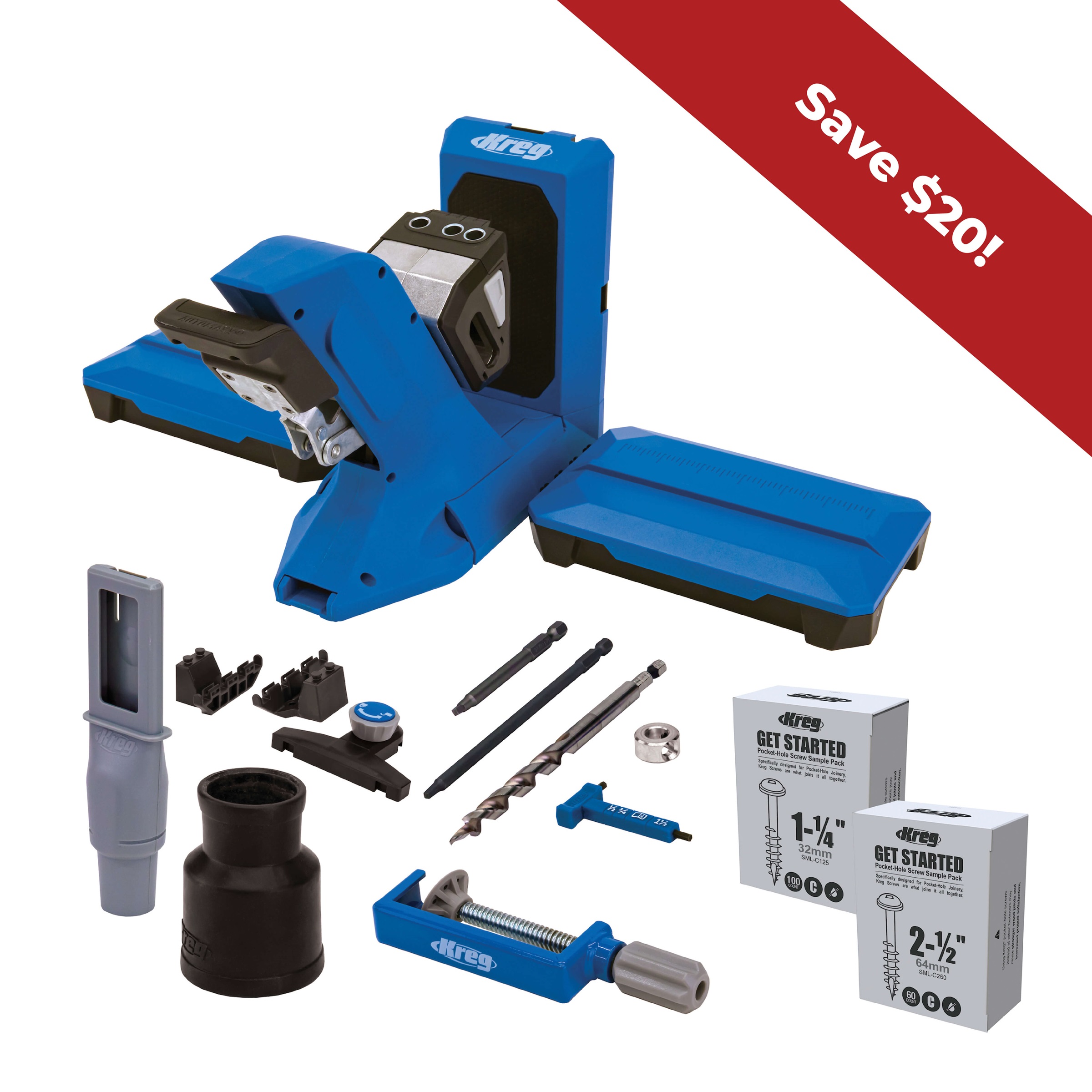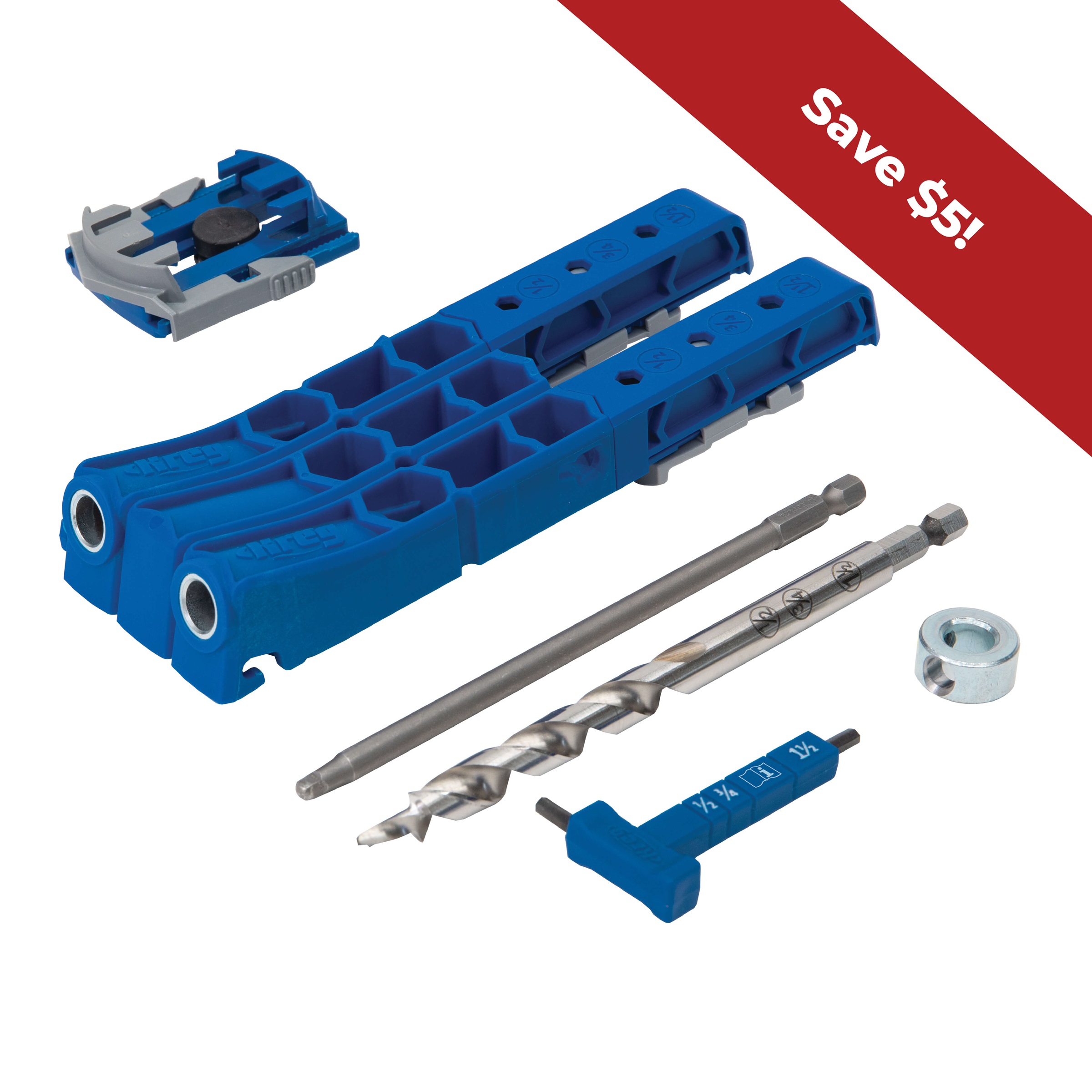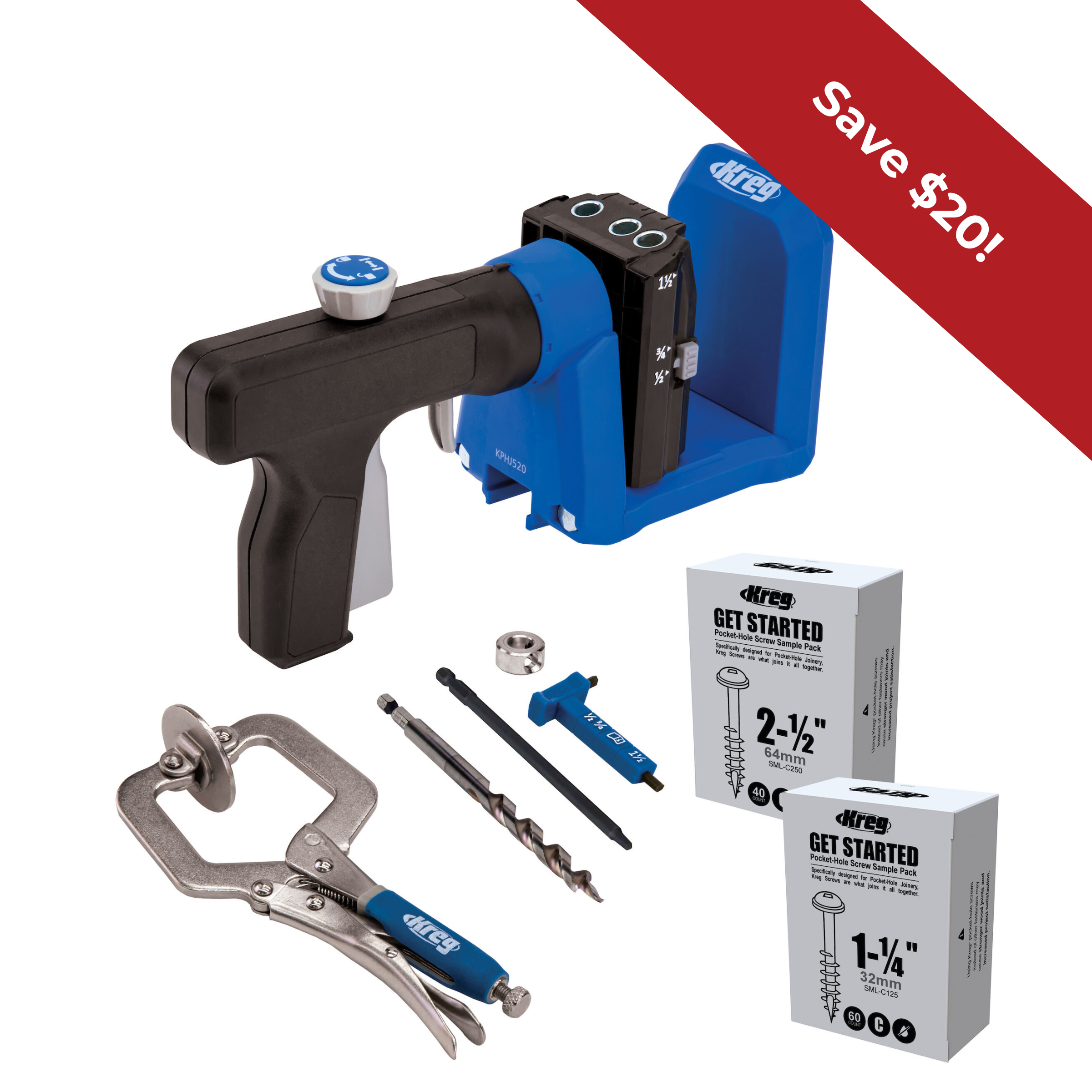One of the best ways to create organized storage is with drawers.
They make it so much easier to access whatever you’re keeping—from pots and pans in the kitchen to clothes in the bedroom to tools in the workshop.
Many project builders shy away from incorporating drawers into their projects, though, for a couple main reasons. A big one is figuring out what size—or sizes—those drawers should be. We’ll show you some simple ways to figure that out. But first we’ll look at another reason people don’t create projects with drawers: figuring out how to build them.
Once you understand how to build and size drawers, you’ll be able to step up your storage and organization game.
Build a simple, sturdy drawer
When you look at a drawer, there’s not a lot to it: two sides, a front and back, and a bottom make up the drawer box. If you’re using drawer slides—which really is the way to go—you’ll also add a false front to cover up the gaps needed for the slides.
You can build the drawer sides, front and back, and the false front from solid wood or plywood., depending on the needs of your projects. Plywood is the material of choice for the bottom. Then join it all together with pocket-hole screws.
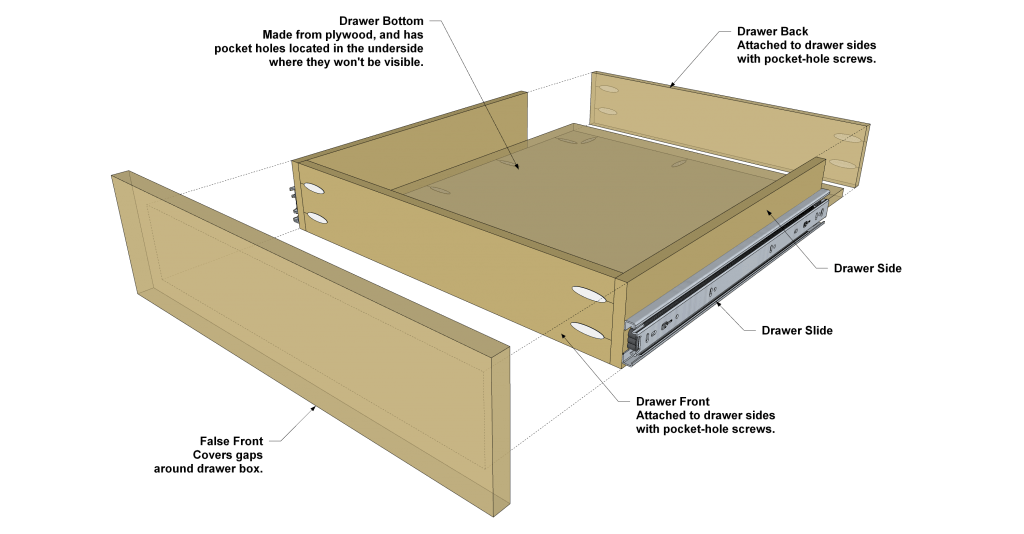
If you want to learn more about building and installing drawers, check out the “related articles” at the bottom of the page.
Use the opening to find the right size
Whether you’re building a kitchen cabinet, a dresser, a bath vanity, or a storage cabinet for the garage, the procedure for finding the correct drawer size is essentially the same:
- Measure the HEIGHT, WIDTH, and DEPTH of the opening for the drawer.
- Subtract at least 1/2″ from the HEIGHT to allow clearance above and below the drawer.
- Subtract 1″ from the WIDTH to allow space for the drawer slides. Drawer slides—whether the ball-bearing style or the simple roller style—are always 1/2″ thick, so the two slides together total 1″.
- Using your depth measurement, find the longest drawer slide that will fit inside. Slides are commonly available from 10″ to 28″ long in 2″ increments. Make your drawer sides the same length as the slides you choose.
- To determine the size of the false front, add 1″ to the HEIGHT and add 1″ to the WIDTH. That way, the false front will overlap the opening by 1/2″ on all sides.
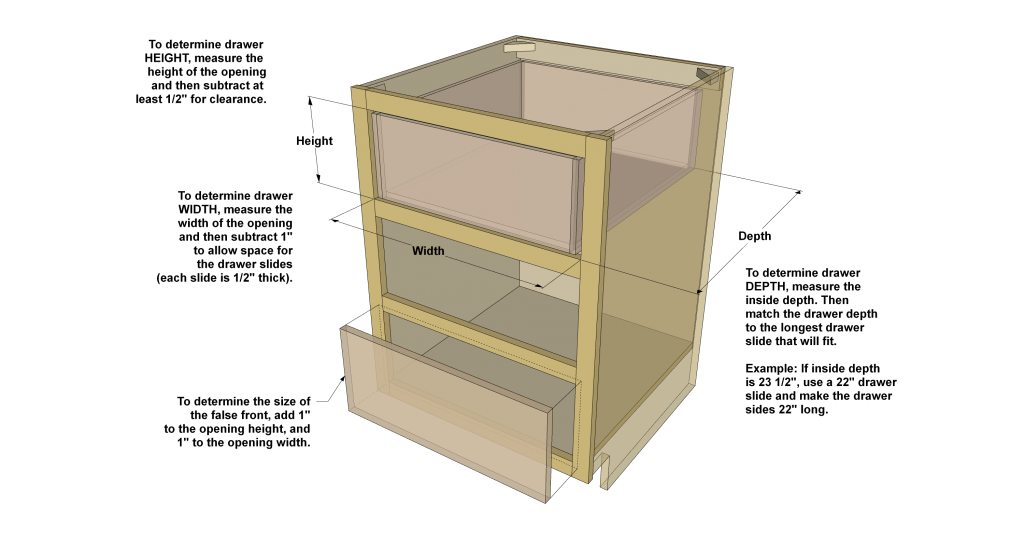
Drawer sizes for different types of projects
It’s great to know how to size a drawer for an opening, but that doesn’t necessarily tell you what size drawer you need in order to store specific items. That answer varies a lot, but a good place to look for reference are three common types of projects with drawers: A kitchen cabinet (which is very similar to a bathroom vanity), a dresser, and a tall chest of drawers.
The illustrations below show some typical measurements for the drawer openings in these kinds of projects. These are examples, and of course you’ll find variations. But you’ll get a good idea of common drawer sizes that you can apply to your projects.
Kitchen Cabinet/Bath Vanity
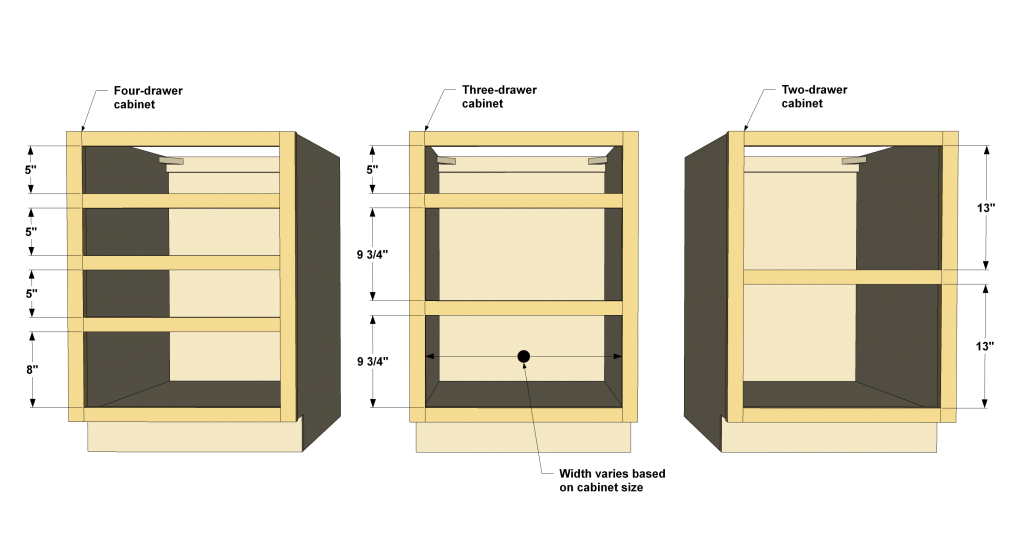
Dresser
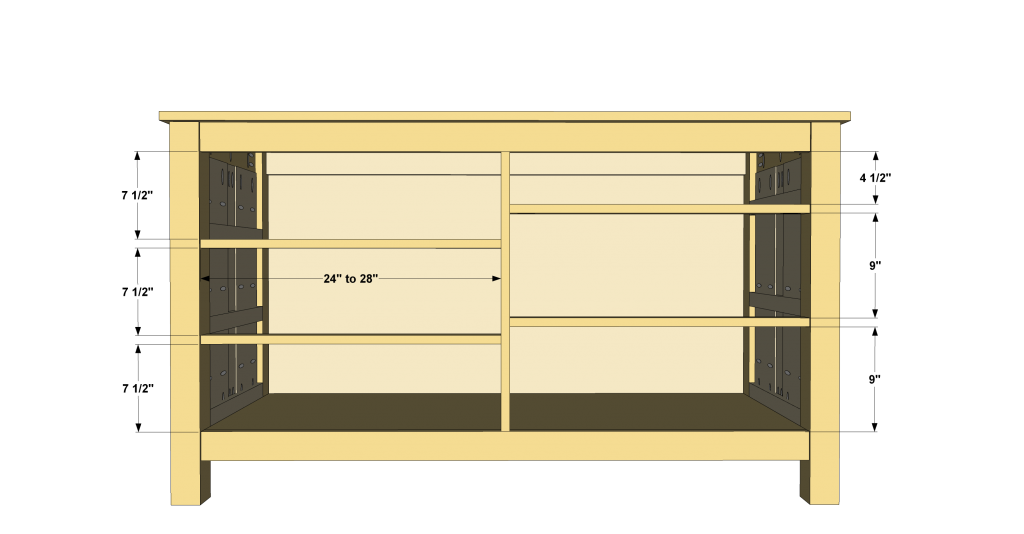
Chest of Drawers
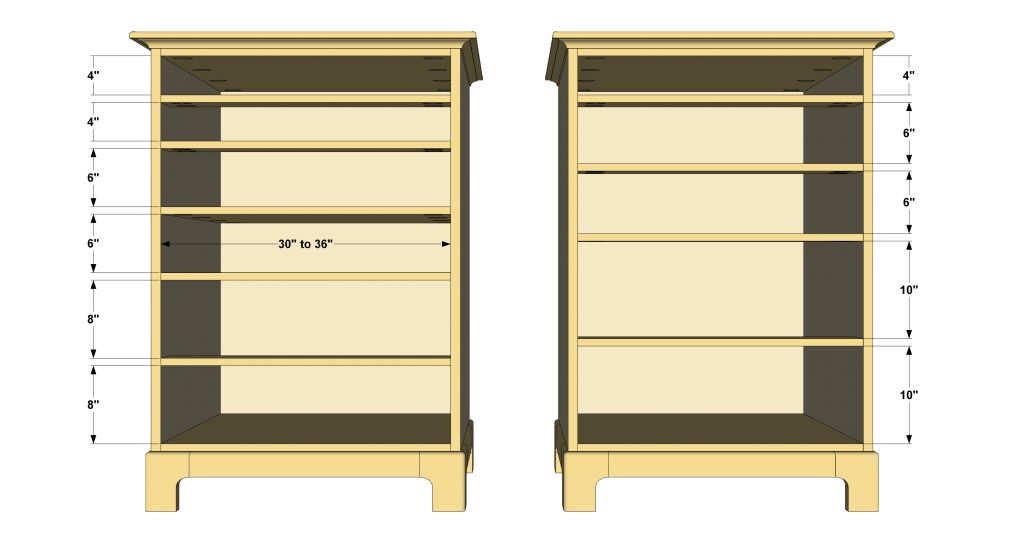
Create your own custom drawer sizes
One thing you’ll notice is that these opening sizes aren’t based on standard dimensional lumber sizes. For example, a drawer opening with a height of 8″ would call for a drawer box with a height of 7 1/2″. The closest dimensional board would be a 1×8, which is actually 7 1/4″ wide. It’s ok to decrease the height of the drawer box a little bit and use that 1×8 board in this example, but you will lose a little bit of storage space.
The need for custom sizes is why many people build their drawer boxes from plywood. With plywood you can build drawer boxes to any dimension you need, without being restricted to off-the-shelf sizes of dimensional lumber. To size all your drawer parts consistently, cut them to size using a circular saw and a saw guide, such as the Kreg Accu-Cut™ or Rip-Cut™. These guides make it easy to get straight, accurate cuts in plywood.
If you prefer to build your drawers from solid wood, you’ll need a way to rip boards to the custom widths you need. You can do that without a table saw using the Kreg Adaptive Cutting System.
Of course, you can build drawers for your projects using dimensional lumber. Just realize that you may have to plan your project from the “inside out.” In other words, you’ll start by figuring out the drawer sizes you need, and then work outward to determine the dimensions of the cabinet or case they’ll fit in to.
Whatever materials you use to create your drawers, once you know how they’re sized and built, you’ll be ready to step up your storage game.

